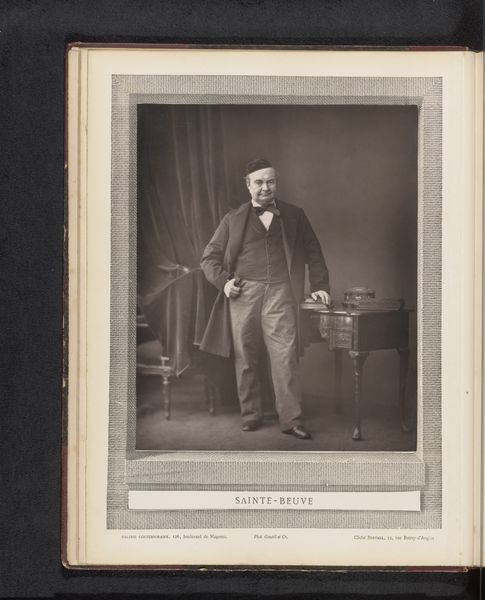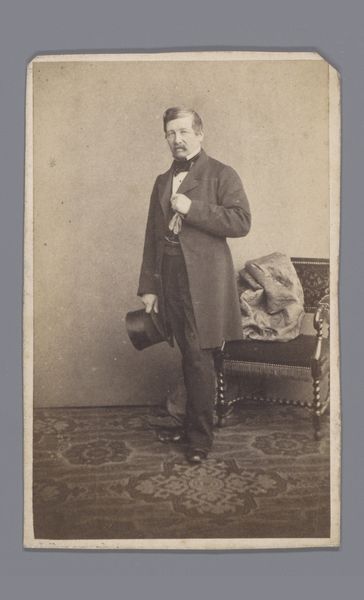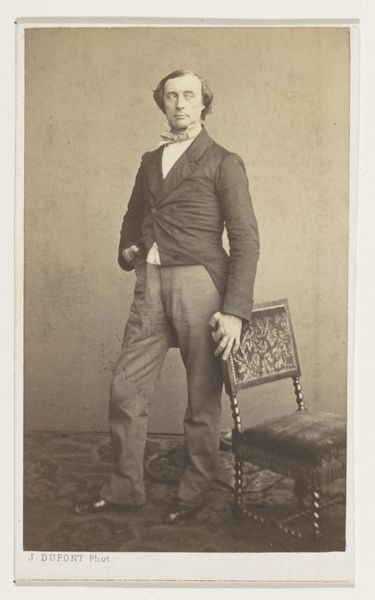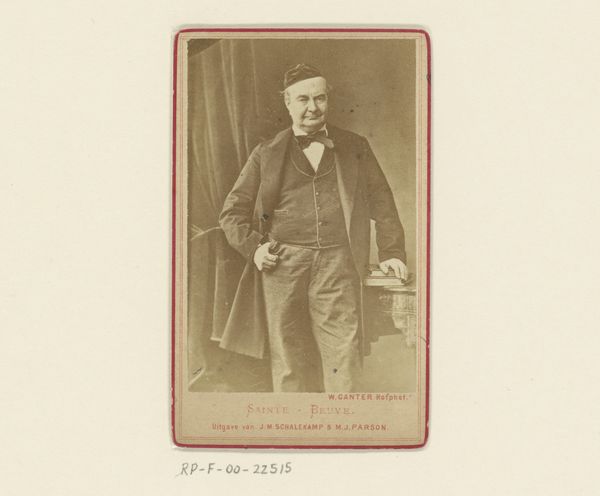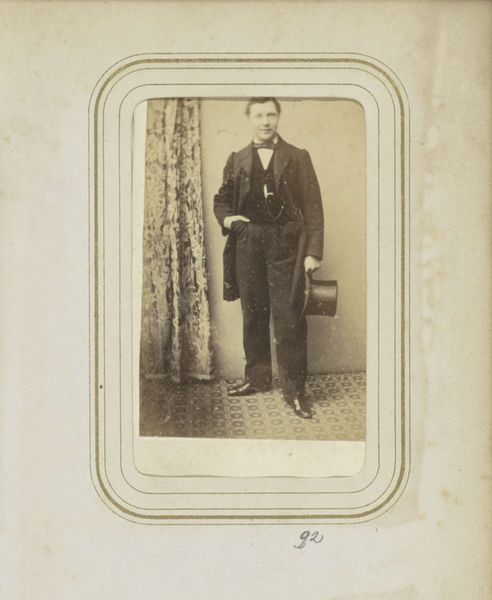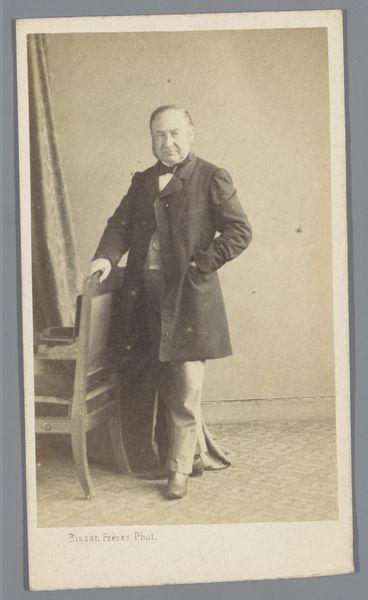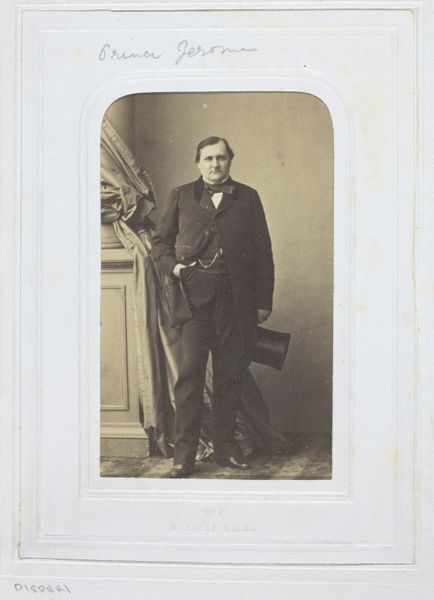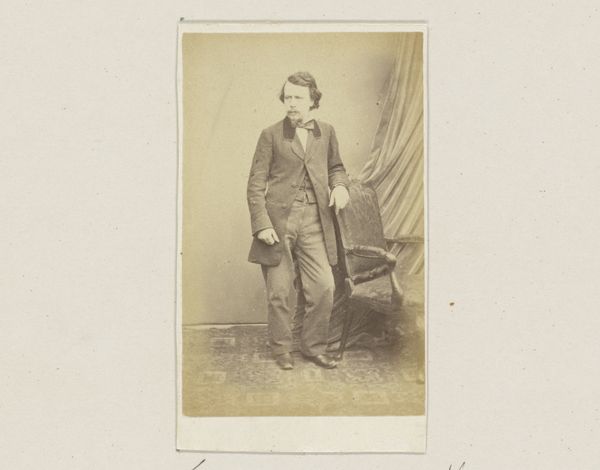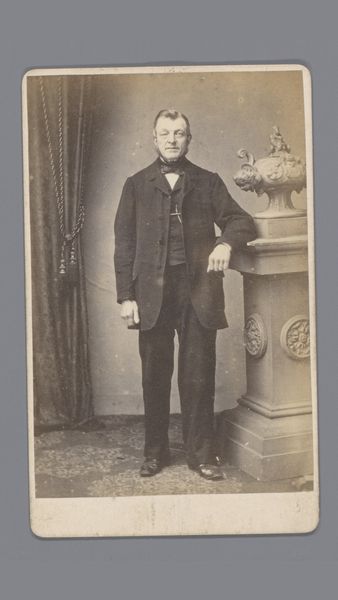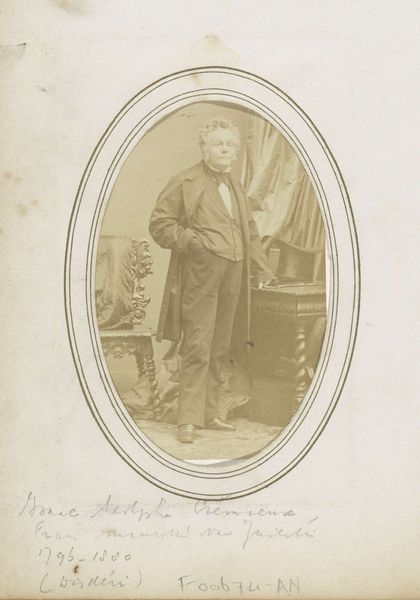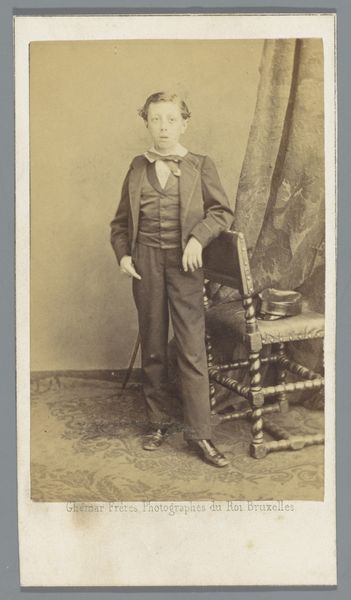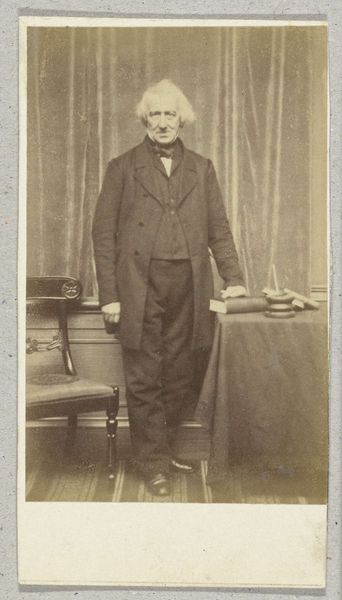
daguerreotype, paper, photography
#
portrait
#
print photography
#
16_19th-century
#
daguerreotype
#
paper
#
photography
#
realism
Dimensions: 23.7 × 19.1 cm (image/paper); 34.3 × 26.2 cm (mount)
Copyright: Public Domain
Curator: Standing before us is an intriguing photographic print called "Sainte-Beuve," created between 1875 and 1877 by the artist listed as Bertall, part of the Art Institute of Chicago's collection. Editor: Immediately, I’m struck by the tonality, the almost sepia-like quality. It imbues the portrait with a sense of gravity, of a bygone era meticulously rendered. Curator: Indeed. It's a photographic portrait made to emulate a certain painterly realism popular during the mid-19th century. The daguerreotype's ability to capture detail served as an important new form of portraiture at the time. How do you feel the staging contributes? Editor: Notice the carefully positioned desk, the velvet backdrop... they work together to create an environment that's both intimate and formal, wouldn’t you agree? There’s a tension created by these different visual cues, suggesting he is in control but perhaps weary. Curator: Right. Sainte-Beuve, a renowned literary critic, held considerable influence in French intellectual circles. The formal pose communicates his authority and perhaps suggests something about how those in power at that time wished to be perceived. Editor: And consider how the light catches his face, accentuating the lines around his eyes and mouth. It’s masterful in a photographic sense. Even though realism dominated the art world at the time, photographers sought out ways to add some flare to an otherwise muted reality, and you see that come through in this work. Curator: It highlights the way photography started influencing politics, social perception, and the distribution of power at that time, democratizing portraiture but still adhering to the social codes. The ability to mass-produce images impacted everything. Editor: Thinking about it, you see both technical craft and perhaps personal vision or manipulation by the artist, all existing within a historical moment. It’s really a powerful and engaging work on those terms. Curator: Precisely. “Sainte-Beuve" encapsulates how image making served as an influential new art form at that time and became part of the public's cultural memory. Editor: Well said. It shows the artistic choices shaping not just how we see the subject, but the social forces they represent.
Comments
No comments
Be the first to comment and join the conversation on the ultimate creative platform.
